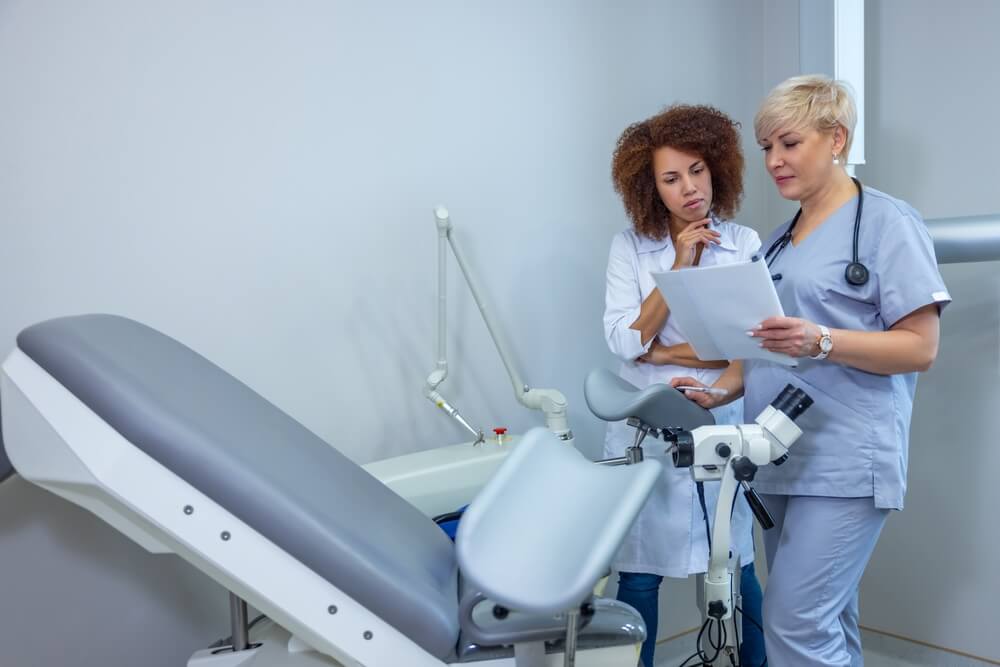Uterine prolapse is a medical condition that many women may find intimidating or confusing. Today we will explore the causes, symptoms, and treatment options for uterine prolapse, shedding light on this often-overlooked women’s health issue. Being well-informed is power, and understanding uterine prolapse empowers women to make informed decisions about their health.
Obstetrics and Gynecology In South Miami, Florida, is a medical center that provides support to patients who are facing this complex and uncomfortable issue because uterine prolapse treatment can be overwhelming and stressful at times so patients need all the support they can get.
What Is a Prolapsed Uterus?
A prolapsed uterus, medically known as uterine prolapse, is a condition where the uterus slips into the vaginal canal because of weakened supporting structures. The uterus is normally held in place by a combination of muscles, ligaments, and other tissues that form the pelvic floor. When these supportive structures weaken, the uterus can lose its usual position and descend into the vagina, causing a range of symptoms.
Uterine prolapse is often associated with factors that contribute to the weakening of pelvic floor support. The most common cause is the strain placed on these structures during childbirth, particularly if a woman has had multiple vaginal deliveries. Other causes of this condition will be discussed in the following section.
What Causes a Prolapsed Uterus?
The question of what causes a prolapsed uterus can be answered in different ways. Various factors can weaken these supportive structures of the uterus, leading to a prolapse. As briefly mentioned, one of the primary causes of the condition is the strain on pelvic floor muscles during childbirth. The more deliveries a woman has, the higher the risk of uterine prolapse.
Other factors contributing to a prolapsed uterus include:
- Age and Hormonal Changes: As women age, hormonal changes, especially during menopause, can result in decreased estrogen levels. This hormonal shift weakens the pelvic muscles, making the uterus more susceptible to prolapse.
- Genetic Predisposition: Some women may have a genetic predisposition to weaker pelvic support structures, increasing their likelihood of experiencing uterine prolapse.
- Chronic Straining: Chronic conditions such as chronic constipation, persistent coughing, or heavy lifting can place undue pressure on the pelvic floor, contributing to uterine prolapse. Chronic straining is a significant contributing factor, and prolonged or repetitive straining can exert excessive pressure on these structures, leading to their weakening over time.
Prolapsed Uterus Symptoms
Recognizing prolapsed uterus symptoms is crucial for seeking timely medical attention and intervention. It is important to note that the severity of symptoms can vary among individuals, and some women may not experience noticeable symptoms, especially in the early stages of uterine prolapse. Regular pelvic examinations and open communication with a healthcare provider are essential for early detection and appropriate management of uterine prolapse.

Women experiencing any of the following signs of a prolapsed uterus should seek medical advice promptly:
- Feeling of Fullness or Pressure in the Pelvic Area: Women with uterine prolapse often describe a sensation of fullness or pressure in the pelvic region, as if something is descending.
- Protrusion of the Uterus into the Vaginal Canal (Bulge): In more advanced cases of uterine prolapse, a noticeable bulge or lump may be observed in the vaginal area. This bulge represents the descent of the uterus into the vaginal canal and can be felt during self-examination.
- Backache and Pelvic Discomfort: Women with a prolapsed uterus may experience backaches, especially in the lower back. This pain can be attributed to the strain placed on the supporting structures of the uterus and pelvic floor. Also, persistent discomfort or pain in the pelvic area is a common symptom of uterine prolapse. This discomfort may range from a mild, nagging sensation to more pronounced pain, depending on the severity of the prolapse.
- Urinary Issues: Changes in urinary habits are common symptoms of uterine prolapse. This can include difficulty in fully emptying the bladder, urinary frequency, urgency, or incontinence. Women may also experience recurrent urinary tract infections.
- Sexual Dysfunction: Some women with a prolapsed uterus may encounter sexual dysfunction, including pain or discomfort during intercourse. The displacement of the uterus can impact sexual satisfaction and may lead to a decrease in sexual activity.
- Difficulty with Bowel Movements: Uterine prolapse can exert pressure on the rectum, leading to difficulty with bowel movements. Constipation or a sensation of incomplete bowel evacuation may be reported by women with a prolapsed uterus.
Disregarding any of the abovementioned signs of a prolapsed uterus can lead to more serious health issues, so be mindful of the changes you experience and act promptly.
Uterine Prolapse Treatment
The treatment of uterine prolapse depends on the severity of the condition and the impact of symptoms on an individual’s quality of life. Fortunately, there are various uterine prolapse treatment options available to patients, ranging from conservative measures to surgical intervention. The choice of treatment is often personalized based on factors such as the woman’s age, overall health, the extent of uterine prolapse, and her preferences.
Some of the most popular uterine prolapse treatment options include pelvic floor exercises, also called Kegels, where the process of strengthening the pelvic floor muscles can provide significant relief and prevent further deterioration. Also, medical professionals very often recommend hormone replacement therapy or HRT, especially for postmenopausal women, because hormone replacement therapy can address hormonal imbalances and strengthen the pelvic tissues.
Other options available to patients include:
- Pessaries: A pessary is a small, removable device inserted into the vagina to provide support to the uterus and surrounding structures. Pessaries come in various shapes and sizes and are fitted based on an individual’s anatomy. Regular follow-up appointments with a healthcare provider are necessary to ensure proper placement and address any concerns.
- Physical Therapy: Physical therapy, including specialized exercises and techniques guided by a physical therapist, can help improve pelvic floor strength and function. This may involve biofeedback, electrical stimulation, and other therapeutic approaches.
- Weight Management: For women who are overweight or obese, weight management can be an important aspect of treatment. Maintaining a healthy weight can reduce intra-abdominal pressure and alleviate strain on the pelvic floor.
- Surgical Interventions: In cases where conservative measures are not sufficient, or the prolapse is severe, surgical interventions may be considered. Common surgical procedures for uterine prolapse include a hysterectomy which includes the removal of the uterus, especially if a woman is not planning to have more children. This procedure eliminates the source of the prolapse. Another surgical option is uterine suspension to lift and secure the uterus back into its normal position, and if the patient no longer desires sexual activity, a procedure called colpocleisis may be considered.

In conclusion, understanding uterine prolapse is crucial for women’s health and well-being. By recognizing the causes, symptoms, and available treatments, women can take proactive steps to manage and mitigate the impact of uterine prolapse on their lives. Regular check-ups, open communication with healthcare providers, and a commitment to pelvic health are essential components of addressing uterine prolapse and promoting overall women’s health.
Contact Our Center!
If there are still pieces of information you want to know or you have additional concerns, call our center at any time, and we will do our best to answer all of your questions.


